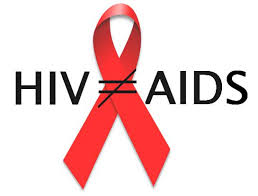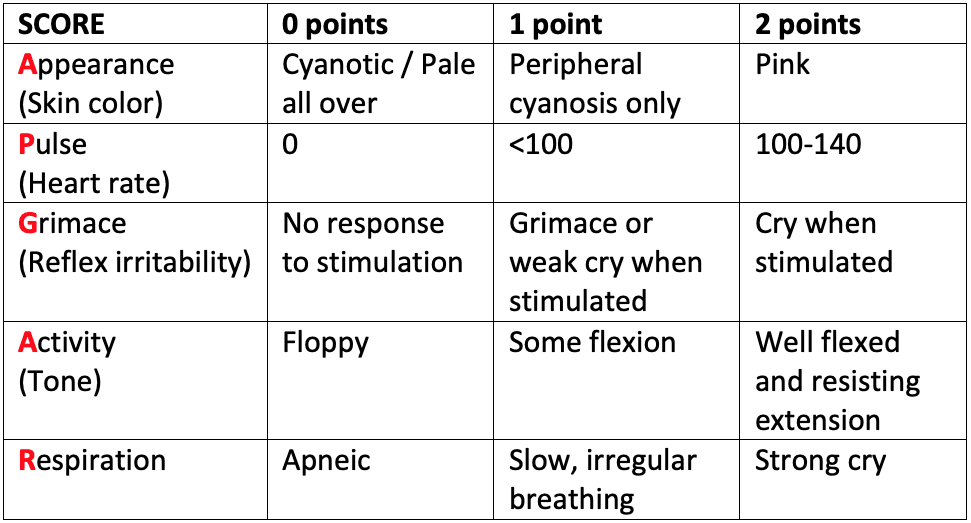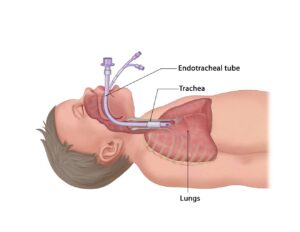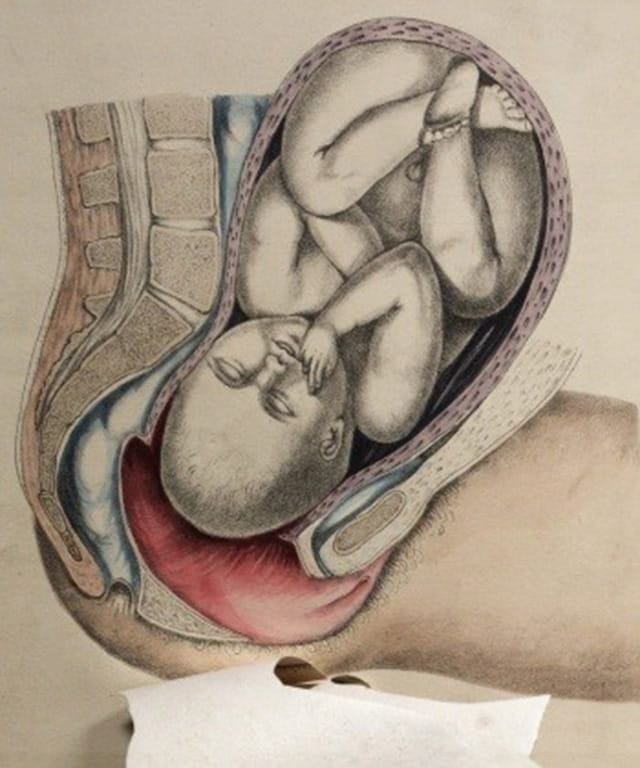Treatment of HIV/AIDS in Children (ARV therapy)
Treatment of HIV/AIDS in Children (ARV therapy)
Treatment of HIV/AIDS begins after confirmation through the following diagnostic procedures.
Diagnostic Measures / Investigations.
Criteria for diagnosis of HIV/AIDS:
- ∙ Clinical Stage criteria
- ∙ HIV blood test must be positive
A reactive rapid test result must be confirmed before a diagnosis of infection can be given. Most commonly used to screen blood for donation in order to exclude those in the window period is ELISA AglAb tests
The test that Detects the genetic material of HIV itself (rather than antibodies or antigens) are known as PCR tests PCR (polymerase chain reaction) test is a type of test under Nucleic-acid Amplification testing (NAT).
NB: These tests should be used in conjunction with the clinical status, history, and risks factors of the person being tested.
HIV testing provision steps/protocol
- ∙ Pre-test information and counseling
- ∙ HIV testing
- ∙ Post-test counseling (individual/couple)
- ∙ Linkage to other services
Step 1: Pre-test information and counseling
Help the client/patient to know the ways HIV is transmitted and basic HIV preventive measures, benefits of HIV testing, possible test results and services available, consent and confidentiality, individual risk assessment, and fill the HTS card. Allow clients/patients to ask questions.
Step 2: HIV testing
Will be done using blood. For those below 18 months, a DNA PCR test will be done and those above 18 months an antibody test will be done. Refer to the HIV testing algorithms for the different age groups.
Step 3: Post-test counseling (individual/couple)
Assess readiness to receive results. Give results simply. Address concerns, disclosure, partner testing and risk reduction. Provide information about basic HIV care and ART care; complete the HTS card and HTS register.
Step 4: Linkage to other services
Provide information about services; fill the triplicate referral form. When the patient is enrolled, enter the pre-ART enrolment number into the HTS register and subsequently into the ART register when the patient is initiated on ART.
Principles of HIV testing services (HTS)
HTS delivery shall be non-discriminatory and offered using a human rights approach that observes the 5Cs (Confidentiality, Consent, Counseling, Correct test result and Connection to appropriate services). These principles are described below.
∙ Confidentiality: All providers should ensure privacy during HTS provision. All information discussed with clients should not be disclosed to another person without the client’s consent.
∙ Consent: All persons 12 years and above should consent to HTS on their own. In situations where consent cannot be obtained, the parent or guardian (of a child), next of kin, or legally authorized person should consent.
∙ Counseling: All persons accessing HTS should be provided with quality counseling before and after testing as per the approved HTS protocol.
∙ Correct test result: HTS providers should adhere to the national testing algorithm and must follow the Standard Operating Procedure for HIV testing to ensure that clients receive correct HIV test results.
∙ Connect to other services: Providers should link HTS clients to appropriate HIV prevention, treatment, care and support services.
Places to prick a child
- ∙ Infants age 1-4 months, less than 6kg heels work best
- ∙ Infants age 5-10 months, less than 10kg toes work best
- ∙ Larger infants and older children use the ring or middle finger
HIV testing algorithm for infants and children below 18 months of age
A virological test (DNA/PCR) is recommended for determining HIV status in infants and children below 18 months of age. The sample for testing should be collected using dried blood spot (DBS) specimens. The 1st DNA/PCR test should be done at six weeks of age or the earliest opportunity thereafter. Interpretation of the results and further testing are guided by the testing algorithm.
∙ A POSITIVE DNA/PCR test result indicates that the child is HIV-infected. All infants with a positive DNA/PCR test result should be initiated on ART and another blood sample should be collected on the day of ART initiation to confirm the positive DNA/PCR HIV test result.
∙ A NEGATIVE 1st DNA/PCR test result means that child is not infected, but could become infected if they are still breastfeeding. Infants testing HIV negative on DNA/PCR should be retested using DNA/PCR six weeks upon cessation of breastfeeding. Infants with 2nd negative DNA/PCR test should have a final rapid antibody test performed at 18 months.
Antibody tests can be used:
In children <18months of age to:
- ∙ Determine HIV- exposure in infants born to mothers of unknown HIV status
- ∙ Exclude infection in an infant at 18 months of age if the child has ceased breastfeeding for at least 6 weeks
∙ In Children > 18 months of age to confirm HIV infection
- ∙ HIV DNA PCR testing should be carried out on:
- ∙ Every HIV-exposed baby at 6 weeks of life or at first clinic visit if > 6weeks of age
Procedure for DBS collection
- Warm the area
- Position baby with foot down
- Sterilize area with alcohol
- Allow to air dry
- Press lancet into foot, prick skin
- Wipe away first drop
- Allow large drop to collect
- Add 50ul (approx 2 drops) into one circle and fill it
- Fill at least 3 circles
- Clean foot, do not bandage
- Dispose of all contaminated material appropriately

Figure showing serial HIV testing algorithm for persons above 18 months of age
Cautions during HIV testing
- ∙ Never use expired HIV test kits.
- ∙ Avoid modification of procedures
- ∙ Avoid use of clotted blood.
- ∙ Avoid use of ‘dirty’ blood (skin flakes, powder, sweat etc.)
- ∙ Avoid introducing air bubbles into the devices when adding the sample.
∙ Do not
- ⇒ Add more or less blood
- ⇒ Add more or less buffer
- ⇒ Exchange buffers
- ⇒ Contaminate the buffer
- ⇒ Modify the incubation time
LINKAGE FROM HIV TESTING TO HIV PREVENTION, CARE AND TREATMENT
Linkage refers to the process of connecting individuals who have tested positive for HIV from one service point to another.
Linkage to care is successful if the patient/client receives the services they have been referred to receive. For all clients who test HIV-positive, linkage should occur within seven days (within the same facility) and 30 days for inter-facility or community-to- facility referrals. It is recommended to use lay providers (community- and facility-based) as linkage facilitators. The process of linkage within the same health facility is described below
Types of linkages
- ∙ Internal facility linkage
- ∙ Inter facility linkage
- ∙ Community facility linkage
Internal facility linkage
Inter-facility linkage refers to connecting a newly diagnosed patient at one department to another department in the same facility for HIV treatment, care, and support services.
Steps of internal linkage facilitation
Post-test counseling
- ∙ Provide results accurately
- ∙ Provide information about care available at facility and elsewhere in catchment area ∙ Describe the next care and treatment steps
- ∙ Discuss the benefits of early treatment initiation and cons of delayed treatment ∙ Identify and address any barriers to linkage
- ∙ Involve the parent and child in the decision-making process regarding care and treatment ∙ Fill in client card and include referral notes
- ∙ Fill in the triplicate referral form
- ∙ Introduce and hand the patient to a linkage facilitator
- ∙ If same day linkage is not possible, book an appointment for the client at the clinic and follow-up to ensure the patient attends
Patient is escorted to the HIV clinic
- ∙ Linkage Facilitator escorts client to ART clinic with the linkage forms
- ∙ Hand over client to responsible staff at that clinic
Enrolling at HIV clinic
- ∙ Register the patient in the pre-ART register
- ∙ Open an HIV/ART card/ file for the patient
- ∙ Offer ART preparatory counseling
- ∙ Conduct baseline investigations
- ∙ If the patient is ready to start ART, initiate ART and continue with counseling support (disclosure, psychosocial)
- ∙ Coordinate integrated care if require (e.g. TB/HIV treatment,
- ∙ PMTCT)
- ∙ Discuss and make an appropriate appointment with the patient
Inter facility linkage
Inter-facility linkage refers to connecting a newly diagnosed patient at one facility to another facility for HIV treatment, care, and support services.
The referring facility should track (follow up) all HIV-positive patients referred to other facilities and ensure they are enrolled in care and on ART within 30 days, using the follow up/tracking schedule.
Community-facility-community linkages
Community-facility linkage refers to connecting a client who tests HIV-positive in the community to a health facility for HIV treatment, care, and support services.
HTS programs should establish functional community health systems with linkage systems including Peer Leaders, Expert Clients, VHTs and CHEWs. These should be involved in the mobilization for the targeted outreaches and follow up to link all who testing positive. Linkage from community to facility should be done within 30 days after diagnosis.
10 point care package for comprehensive Pediatrics AIDS care
1∙ Confirm HIV status as early as possible
2∙ Monitor the child’s growth and development
3∙ Ensure Immunizations are started & completed as per schedule
4∙ Provide prophylaxis for OI
5∙ Actively look for and treat infections early
6∙ Counsel mother & family on:
- ∙ Optimal infant feeding
- ∙ Good personal & food hygiene
- ∙ Follow up recommendations for the child
7∙ Conduct disease staging for the infected child
8∙ Offer ARV treatment for the infected child, if needed
9∙ Provide psychosocial support for the infected child and mother
10∙ Refer the infected child to higher levels of specialized care if necessary
Treatment of HIV/AIDS in Children (ARV therapy) Read More »















